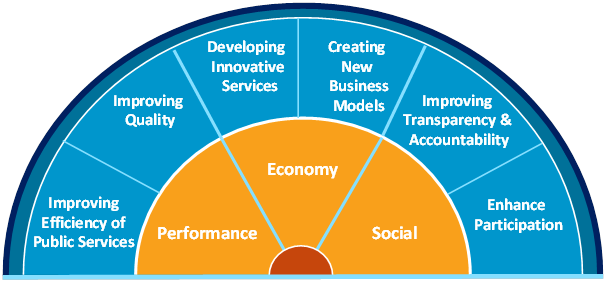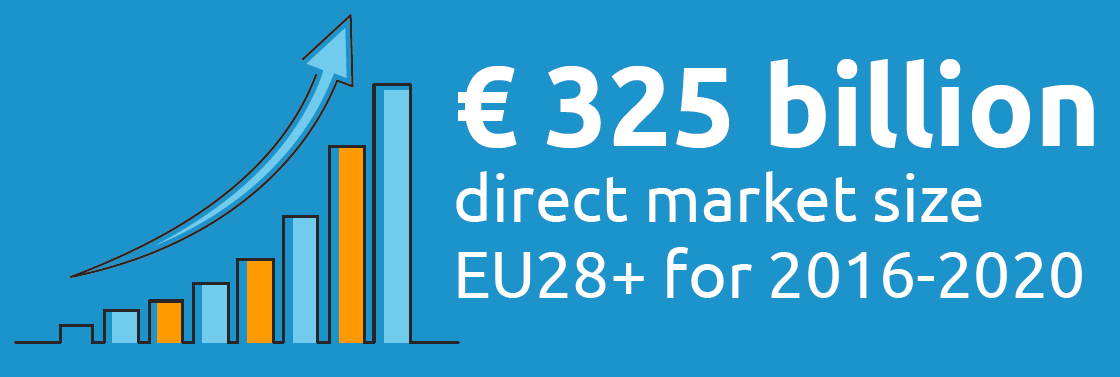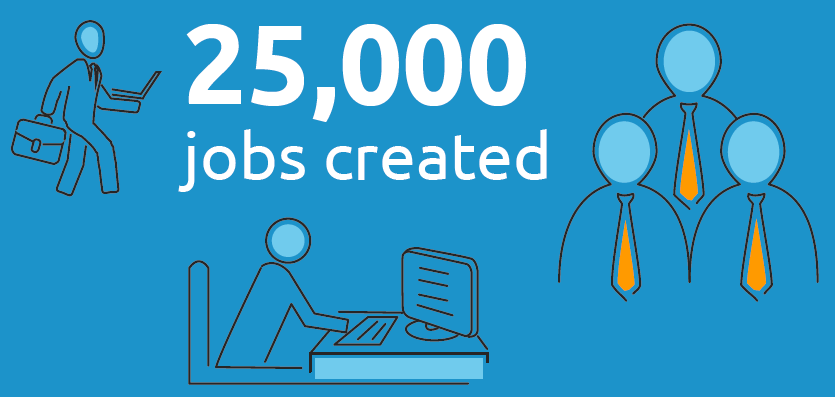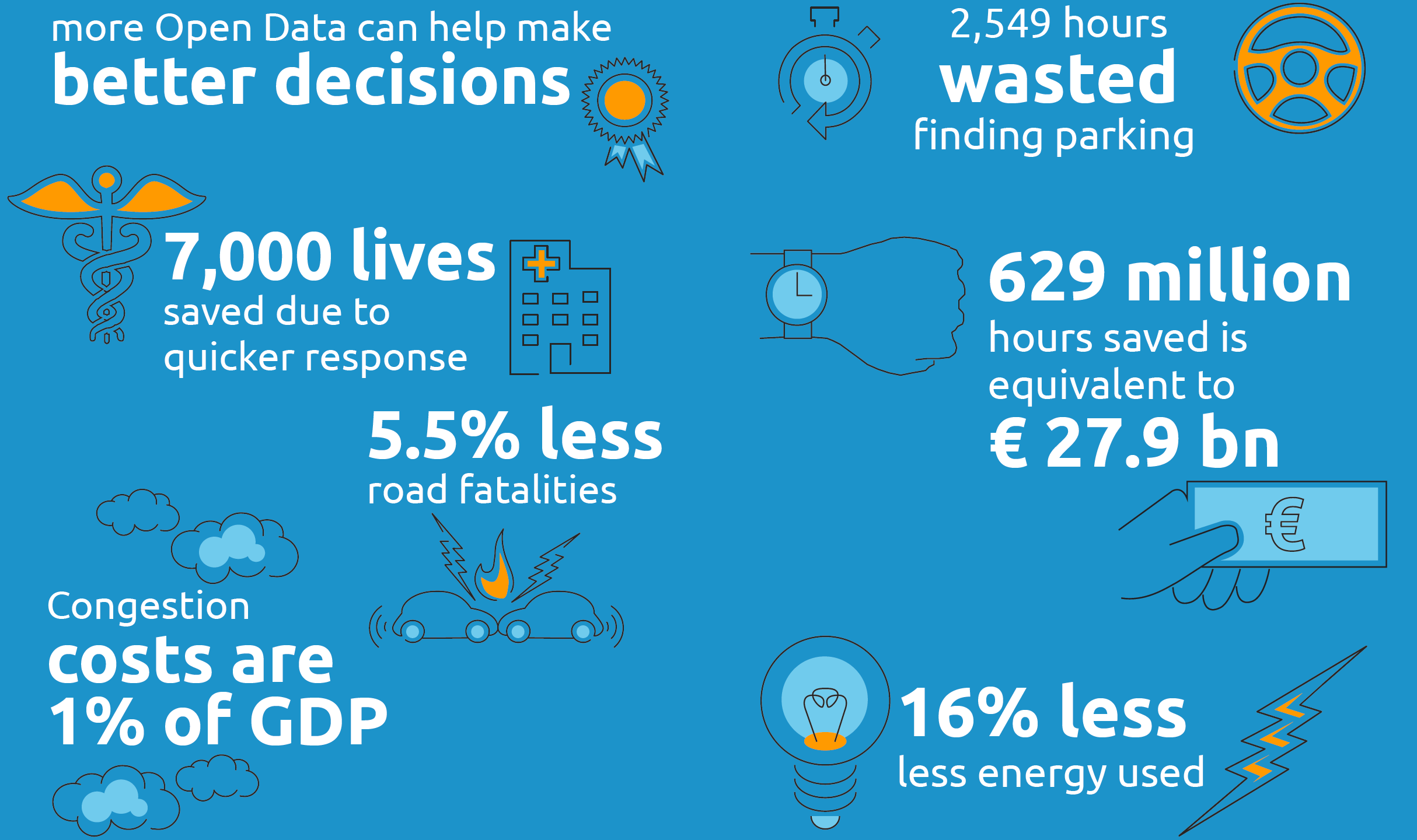Eiropas datu portāls rasmo publiskā sektora informācijas metadatus, kas pieejami publiskajos datu portālos Eiropas valstīs. Ir sniegta arī informācija par datu sniegšanu un datu atkalizmantošanas sniegtajiem ieguvumiem.
Atklātie (valdības) dati apzīmē informāciju, ko vāc, rada vai apmaksā publiskā sektora struktūras (to sauc arī par publiskā sektora informāciju) un dara brīvi pieejamu atkalizmantošanai jebkādiem mērķiem. Licencē norāda lietošanas noteikumus. Šie atklāto datu principi ir sīki aprakstīti vietnē Open Definition.
Publiskā sektora informācija ir informācija, kas ir publiskā sektora rīcībā. Direktīvā par valsts sektora informācijas atkalizmantošanu ir sniegts kopējs tiesiskais regulējums Eiropas valdību rīcībā esošo datu tirgum. Tā pamatā ir iekšējā tirgus pīlāri: brīva datu aprite, pārredzamība un godīga konkurence. Jāņem vērā, ka ne visa publiskā sektora informācija ir atklāti dati.
Uzziniet vairāk par PSI direktīvu un citām DG CONNECT neleģislatīvām darbībām šajā jomā.
Leguvumi no datu izmantošanas
Atklātie dati sniedz daudzveidīgus ieguvumus, ieskaitot valsts pārvaldes efektīvāku darbību, ekonomisko izaugsmi privātajā sektorā un plašāku sociālo nodrošinājumu.
Darbības uzlabojumi — atklātie dati var palīdzēt uzlabot sabiedrisko pakalpojumu efektivitāti. Sabiedrisko pakalpojumu sniegšanas procesa efektivitāti var uzlabot, pateicoties datu apmaiņai starp sektoriem, kas var, piemēram, sniegt pārskatu par nevajadzīgiem izdevumiem.
Ieguvumi ekonomikai — vieglāka piekļuve informācijai, saturam un zināšanām veicina inovatīvu pakalpojumu izstrādi un jaunu uzņēmējdarbības modeļu radīšanu.
Sociālā nodrošinājuma uzlabojumi — sabiedrība iegūst no pārredzamākas un vieglāk pieejamas informācijas. Atklātie dati veicina sadarbību, līdzdalību un sociālo inovāciju.

Ieguvumus ekonomikai sniedz vieglāka piekļuve informācijai, saturam un zināšanām, kas savukārt veicina inovatīvu pakalpojumu izstrādi un jaunu uzņēmējdarbības modeļu radīšanu.
Paredzams, ka 2016. gadā atklāto datu tiešais tirgus apjoms ES 28+ valstīs sasniegs EUR 55,3 miljardus. Tiek prognozēts, ka laikposmā no 2016. līdz 2020. gadam tirgus apjoms palielināsies par 36,9 %, sasniedzot EUR 75,7 miljardus 2020. gadā, ņemot vērā inflāciju. 2016.–2020. gada periodā kopējais tiešais tirgus apjoms ir aprēķināts EUR 325 miljardu apmērā.


Jaunu darbvietu izveidi nodrošina ekonomikas stimulēšana un lielāks pieprasījums pēc darbiniekiem ar iemaņām darbā ar datiem. 2016. gadā ES 28+ valstu privātajā sektorā bija 75 000 ar atklātajiem datiem saistītu darbvietu. Līdz 2020. gadam šis skaits palielināsies teju līdz 100 000 atklāto datu darbvietām. Gandrīz 25 000 jaunu tiešo atklāto datu darbvietu radīšana līdz 2020. gadam.
Publiskā sektora darbību var uzlabot ar atklāto datu palīdzību. Sabiedrisko pakalpojumu sniegšanas procesa efektivitāti var uzlabot, pateicoties datu apmaiņai starp sektoriem, kas nodrošina ātrāku piekļuvi informācijai. Prognozētais kopējais izmaksu ietaupījums ES 28+ valstīs līdz 2020. gadam ir EUR 1,7 miljardi.

Atklātie dati ļauj uzlabot efektivitāti, jo tiek izmantoti reālā laika dati, kas ļauj viegli piekļūt informācijai, kas uzlabo atsevišķu lēmumu pieņemšanu. Ir sīkāk izvērtēti trīs gadījumu pētījumi: kā atklātie dati var glābt dzīvības, kā tos var izmantot laika taupīšanai un kā atklātie dati palīdz nodrošināt ar vidi saistītus ieguvumus. Piemēram, atklātajiem datiem piemīt potenciāls ik gadu izglābt 7000 dzīvību, ātrāk nodrošinot atdzīvināšanas pasākumus. Tāpat arī atklāto datu izmantošana satiksmes organizācijā var ietaupīt 629 miljonus stundu, kas citādi tiek lieki patērētas, gaidot uz ES ceļiem.

Ekonomikas pētījuma secinājumu kopsavilkums par atklāto datu sniegtajiem ieguvumiem ir pieejams šeit:
Kontrolsaraksts datu izmantošanai
Important steps to go through before using the data.
Having access to data is a first step. Data is not an end in itself. Data can be used in different ways and for different purposes. Data can also be available with different licences, formats and quality.
Your purpose
Define your purpose: There are different purposes for which the use of Open Data can add value to your activities. It can provide insight into a specific topic that you want more information about or even write about (i.e. data journalism). Open Data can also add required information to an application or service, like details about schools if you are developing an application to help find the best school for yourself or your children. Businesses can also use Open Data to improve their customer profiles and are able to fit the needs of their customers better. Whether it is for private or commercial use, Open Data offers a lot of possibilities.
Identify Data labels: If you know for which purpose you need data, it is important to look whether the data fits your needs by looking at the data labels and metadata (data about the data). For example, if you want to build an application that gives advice about the best primary education in the neighbourhood, you need to check whether the data set that you would like to use includes schools that give primary education, covers the specific area you want to include and whether performance indicators are available.
Open licence
Check Openness: Take a look at the licence information provided about the data set. Make sure a licence is available which allows you to make use of the data in the way that you intend (e.g. that commercial re-use is allowed if you develop a commercial application).
Check Attribution requirements: It is possible that the licence states that people who use the data must credit whoever is publishing it, which means that you need to credit the owner when you make your product or service available. This is called attribution.
Check Share-Alike requirements: If it indicates that people who mix the data with other data have to also release the results as Open Data, you are obliged to publish your own data under a similar licence after adding other data to the original source. This is called share-alike. Make sure that the licence is in line with your purpose for using the data.
In the absence of a licence, there is no information about the terms and conditions applicable! You may want to contact the owner of the data to check what uses are allowed
File format
After you have decided that a specific data set is exactly what you are looking for, you are probably able to choose to download the datasets in different file formats. Depending on your computer skills, you can choose the file type that is most appropriate. The most common file format for tabular data is ‘.csv’. It allows you to add other information to the file or make calculations with the data. Datasets that can be adjusted are published using an open file format. Most datasets are available in an open file format, but bear in mind that some formats (e.g. ‘.pdf’) are not changeable.
Data Quality
On the page where you want to download the data set, you should find information about the last date the file was modified. If you require data for a specific period of time, you need to check whether information about the time period is provided or it has been updated recently. You should check whether the information you were expecting to find in the file is actually included and you understand the different labels.
Here is a short checklist developed by the Open Data Institute:
Form
- how has the data been processed?
- is it in raw or summary form?
- how will its form affect your analysis/product/application?
- what syntactic (language) and semantic (meaning) transformations will you need to make?
- is this compatible with other datasets you have?
Quality
- how current is the data?
- how regularly is it updated?
- do you understand all the fields and their context?
- for how long will it be published?
- what is the commitment by the publisher?
- what do you know about the accuracy of the data?
- how are missing data handled?
Look around at data.europa.eu and discover how it fits your data needs.
